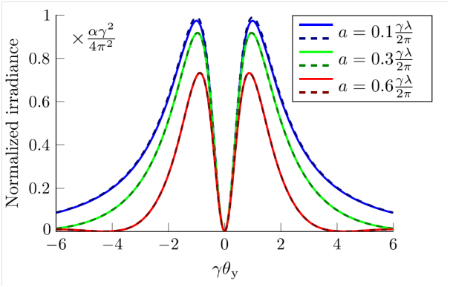Konstantin Kruchinin’s work published in Physical Review Special Topics
Measuring accurately the characteristics of charged particle beams is a key task in modern accelerator facilities. The diagnostic tools are practically the “eyes” of the operators, and their precision and resolution are crucial to define the performance of the accelerator.
In future linear colliders such as the Compact Linear Collider (CLIC) or the International Linear Collider (ILC), particle beams with extremely small emittances will be generated, requiring a precise control of the transversal beam size with a micron-scale resolution over long distances.
The transition radiation (TR) that appears when a charged particle crosses a boundary between two different media, and the diffraction radiation (DR) produced when a relativistic charged particle moves in the vicinity of a medium, provide two widely used methods for measuring electron beam parameters. However, the precision and resolution of TR and DR monitors are determined by how well the production, transport and detection of these radiation types are understood.
oPAC Fellow at Royal Holloway University of London Konstantin Kruchinin, has recently published an article in Physics Review Special Topics – Accelerators and Beams that reports on simulations of TR and DR spatial-spectral characteristics using the Zemax advanced optics simulation software.

Angular distribution of Diffraction Radiation in the far-field for various hole radii, showing the excellent agreement between theory (dashed) and simulations (solid).
In this work, carried out in collaboration with a team of researchers from CERN and Cornell University, advanced Zemax simulations of optical TR and optical DR were presented and compared with state-of-the-art theoretical models. With assumptions similar to theoretical boundary conditions, Zemax simulations of TR and DR agreed with the analytical expressions. Moreover, misalignment studies were carried out to study the limitations of real optical systems. Overall, this tool represents the most comprehensive approach to the design of a real diagnostics based on either optical TR or optical DR including all misalignment errors and optimization of a real optical system (including viewports, polarizers, filters, etc.).